The secret history of black Santas
- Published
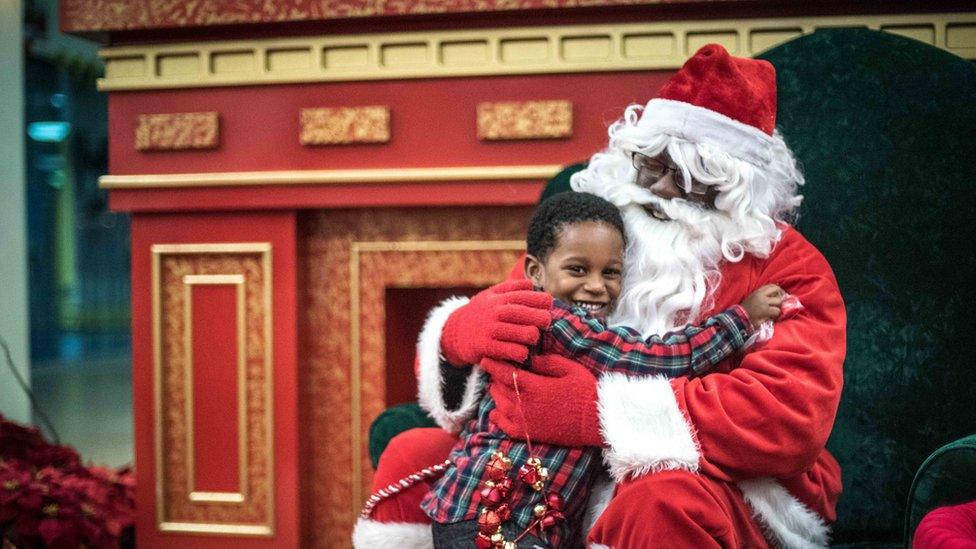
America's biggest shopping mall grabbed headlines this week by hiring its first African-American Father Christmas. But black Santas have been around for a lot longer than you might think - and even played a role in the civil rights struggles of the 1960s.
"Everything that Santa represents has to be you. That's my honest belief. You can't have some grumpy old guy who doesn't love kids sitting there representing somebody who is joyful, somebody who is loving."
Kenny Green is a man who takes his job seriously.
He has been playing Santa Claus for the past five years and although the mall where he works, in a suburb of Washington DC, has hosted a black Santa for as long as anyone can remember, he says they are still "few and far between" in the rest of America.
African-American families come from as far afield as Delaware, 80 miles away, to visit his grotto, at the Shops at Iverson mall.
Which is why, he says, it was "huge" that the Mall of America - the country's biggest indoor shopping complex - decided to hire a black Santa for the first time this year.
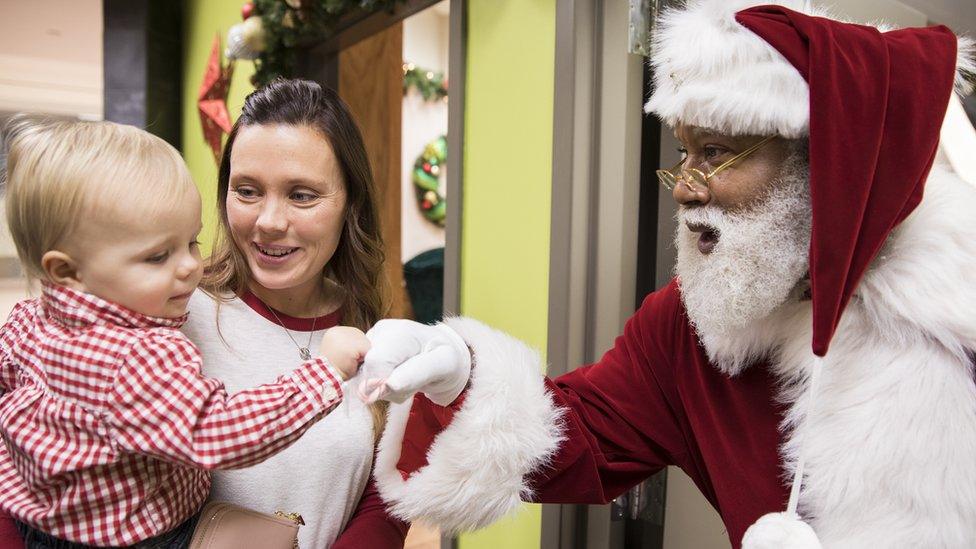
Larry Jefferson was the Mall of America's first black Santa Claus
The Minnesota shopping centre hired Larry Jefferson at a Santa convention in Missouri, where among more than 1,000 attendees he was the only African-American.
He only appeared at the Mall of America for one weekend but it was still enough to spark racist abuse on message boards.
In the overheated post-election atmosphere, Santa Claus is seen by some as another cherished cultural institution under attack by the forces of political correctness. The traditional image of Santa, as a jolly, rotund, and white, character is deeply embedded in American culture.
"Going to a department store, sitting on Santa's lap, all of that, is very central to a certain kind of post-war, white middle-class identity," says Prof Victoria Wolcott, a history professor at the University of Buffalo, who writes about segregation.
"To challenge that, by having a Santa Claus of colour, disturbs people."
It appears to have been disturbing people for more than a century, judging from local newspaper reports about "negro Santas", which tend to veer from an amused "whatever next" tone to examples of flat-out racism.

Santa's origin story
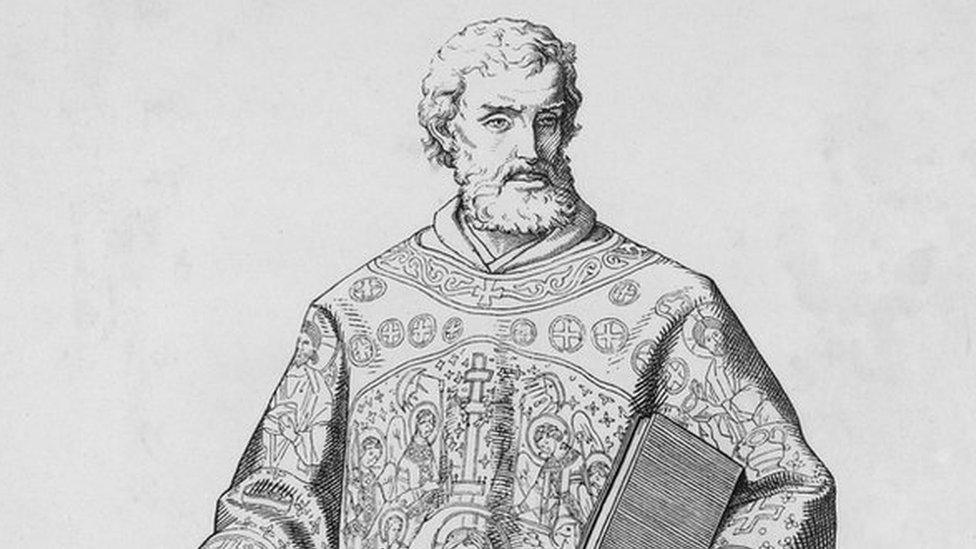
Saint Nicholas, the 4th century bishop
The Santa Claus legend can be traced back to a fourth century monk named St Nicholas who lived in what is today Turkey
The modern image of Santa Claus was created in the late 1800s by American artist Thomas Nast in a series of cartoons for Harper's Weekly magazine
It became a staple of Christmas cards and advertising images in the early 20th Century, most notably a 1930s Coca-Cola commercial, which some believe popularised his distinctive red-and-white garb

"A negro Santa Claus went down a chimney head first and landed on the fire," A 1901 news report, from Bloomfield, New Jersey, read. "The surprised occupants of the room flogged him."
Other reports from the time tell of Christmas parties enlivened by "black-face" Santas, singing "negro melodies".
In 1915, a gushing account of President Wilson's honeymoon at a Virginia resort included a description of a festive party "presided over by a dusky Santa Claus", with a large "gaily decorated" Christmas tree.
"Before [the tree] disported 15 negroes, whose antics and musical efforts kept the President and everybody else almost convulsed with laughter."
Four years later, the Pittsburgh Daily Post carried a report about the "the first negro Santa ever put on the streets of any city". He had been hired by the Volunteers of America in response to "appeals from poor coloured children", the newspaper added.
But the real breakthrough for black Santas came in 1936, when tap-dancing legend Bill "Bojangles" Robinson became Harlem's "first negro Santa Claus" at an annual Christmas Eve party for underprivileged children.
In previous years, the children had been visited by a "Nordic Santa" from downtown New York, reported a local newspaper.
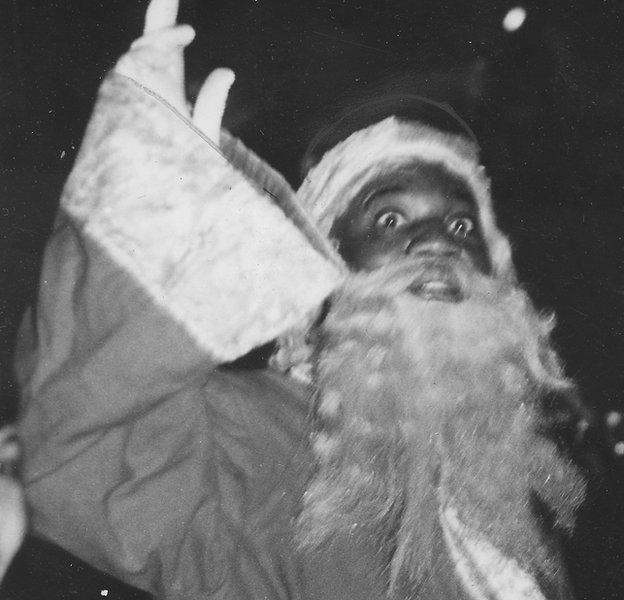
Bill "Bojangles" Robinson as Santa Claus
In 1943, one of Harlem's biggest department stores, Blumstein's, hired its first black Santa Claus. It was followed, in 1946, by a store in Chicago.
As white people moved out to the suburbs, and began shopping at the giant new malls that were being built there, it made economic sense for downtown department store owners to tailor the Christmas shopping experience to their now mainly black customers.
By the 1960s, Santa had been recruited by the civil rights movement, which was starting to use economic boycotts as a weapon in the fight for racial equality.
In 1969, Santa Claus was described as "one of the established symbols of racism" by a civil rights leader, in a dispute with Shillittoes, a Cincinnati department store, that refused to hire a black Father Christmas.
The store owner's Fred Lazarus III said: "This has nothing to do with equality of employment. It just doesn't fit the symbol as kids have known it."
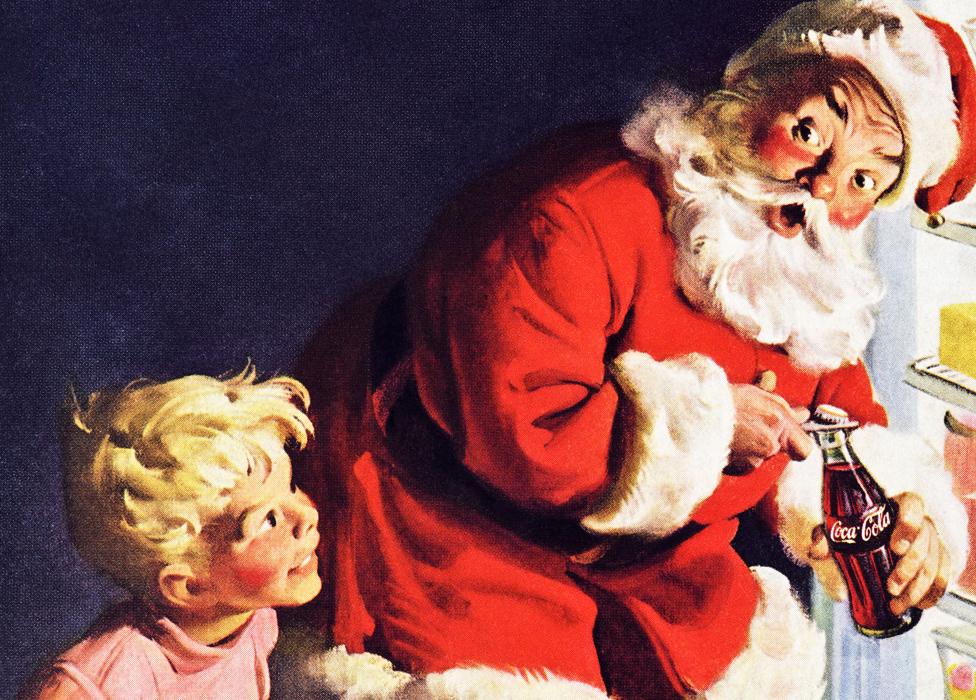
"Father Christmas" represented in a Coca Cola advert from 1959
But the Rev Otis Moss Jr, a regional director of the Southern Christian Leadership Conference, hit back, saying: "If a department store cannot conceive of a black man as Santa Claus for 30 days, it most assuredly cannot conceive of his being president or vice president for 365 days."
The store caved in and hired a black Santa the following year, something that began happening with increasing frequency across the country in the early 1970s, including at Macy's flagship New York store.
One department store in Brooklyn even set up rival black-and-white Santas, separated by a low partition, to enable people to make their choice.
At the Iverson mall, Kenny Green is fully suited up and in character, dispensing Christmas cheer to his young fans.
Shameka Pettus, whose two youngest children, Christopher and Jonathan, can hardly contain their excitement at meeting their Yuletide idol, says: "When I was a kid we only had white Santas so this is pretty cool to see a black Santa in the mall for the kids."
But she adds: "I don't think the colour matters. Santa is Santa."
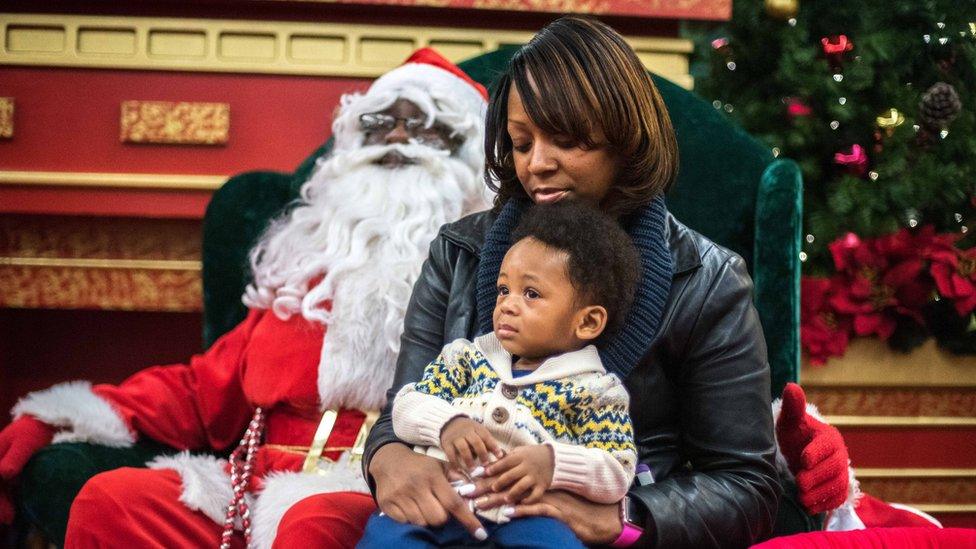
Kenny Green is the latest in a long line of black Santas at the Iverson mall
Green says even some African-American people have difficulty with a black Santa, recalling some "shocking" comments made by one woman last year, who told one of his elves Santa should be white.
But he adds: "When it comes to the spirit of Christmas and what the spirit of Santa is all about, it's not about race, it's not about white or black, it's about the love you have and the spirit you represent."
He says the Mall of America's black Santa will "open a lot of eyes" and could lead to an "influx" of Santas from all different ethnic backgrounds, not just African American.
"I would definitely take my children to go see an Hispanic Santa. I would definitely take my children to go see an Asian Santa," he says.
"Because that's letting them know that Santa is a representation of all of us. That's who we should be. We all should be Santas. We all should have Santa in our heart and in our spirit."
Join the conversation - find us on Facebook, external, Instagram, external, Snapchat , externaland Twitter, external.